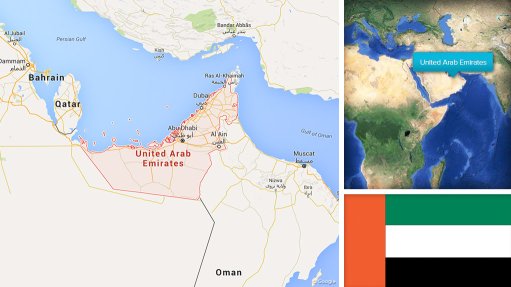Digital transformation may offer remedy to SA’s manufacturing ailments
South Africa ranked 27 in the Deloitte Global Manufacturing Competitiveness Survey for 2016, having slipped three places since 2013, and the country is expected to drop even further in the next five to ten years. “The rising cost of production, combined with muted investments in technology, is making it difficult for South African manufacturers to compete with their international peers,” says Deloitte industrial products and services leader for Africa Mike Vincent.
However, he notes that technology developments offered by the Industry 4.0 revolution, such as the Internet of Things (IoT), can streamline operations and increase productivity, thereby improving the global competitiveness of local manufacturers.
Vincent points out that manufacturing worldwide is undergoing a digital transformation that is accelerating at “breakneck speeds”, owing to the exponential growth of smart technologies.
He warns that manufacturers worldwide are having to adapt their businesses and industrial processes in line with the rapidly changing environment to remain relevant and competitive. “The widespread adoption of information and communication technology is paving the way for completely new disruptive approaches to development, production and the entire supply chain.”
Industry 4.0 technologies provide significant opportunities for local manufacturers to lead the charge in creating new business models, Vincent asserts. He adds that moving to a value-add approach that focuses on improving services by adopting smarter technologies could provide the socioeconomic impact needed to stimulate South Africa’s economy and address the social challenges of unemployment, poverty and inequality.
However, appropriate investments are needed for the industry to realise the benefits of IoT. Innovations in sensor technology, which can be coupled with new data-processing technologies and analytical forecasting models to monitor the entire manufacturing value chain, enable manufacturers to measure end-users’ interaction with the products. “There is an exciting opportunity now to use this business knowledge and customer insight to improve the manufacturing process and, most importantly, the product itself,” says Vincent.
He points out that sophisticated cars are assembled almost entirely by machines using parts manufactured and imported from different regions of the world, making the process time consuming and costly. However, these issues are almost completely negated by digital supply chains that are supported by advanced predictive analytics that coordinates all principal partners, countries, individual parts, thousands of suppliers and even employees in the factories.
“Manufacturers that want to improve their competitiveness internationally should seriously consider applying IoT data processing and analytical forecasting technologies in their operations. Technology-driven manufacturing innovations are evolving rapidly, which makes analytics and IoT a trend to watch in the future,” says Vincent.
However, there is a risk that Industry 4.0 will result in reducing low-skilled manual labour jobs in the manufacturing sector, owing to greater levels of automation. “The flip side of the opportunity is that, when scale and low-cost wages are no longer large sources of competitive advantage to global players, local manufacturers will reclaim dominance in local markets,” Vincent highlights.
Meanwhile, he notes that connectivity and accessibility remain the greatest hurdles for greater Industry 4.0 adoption by businesses and consumers in Africa and that “more innovation still needs to happen first, before widespread adoption will occur”.
However, Vincent points out that “numerous opportunities exist to use connected networks across various industries to establish a competitive advantage”. He asserts that Africa’s lack of infrastructure does offer an advantage over developed economies. For example, the continent is typically not bogged down by legacy issues and can install the latest information and communication infrastructure more cheaply than nations that need to replace obsolete technologies.
Vincent adds that collaboration among governments, industries and research institutions in Africa offer significant opportunities, but “more education and information about the topic of advanced manufacturing and its benefits for policymakers, as well as industry leaders, is needed”.
Article Enquiry
Email Article
Save Article
Feedback
To advertise email advertising@creamermedia.co.za or click here
Announcements
What's On
Subscribe to improve your user experience...
Option 1 (equivalent of R125 a month):
Receive a weekly copy of Creamer Media's Engineering News & Mining Weekly magazine
(print copy for those in South Africa and e-magazine for those outside of South Africa)
Receive daily email newsletters
Access to full search results
Access archive of magazine back copies
Access to Projects in Progress
Access to ONE Research Report of your choice in PDF format
Option 2 (equivalent of R375 a month):
All benefits from Option 1
PLUS
Access to Creamer Media's Research Channel Africa for ALL Research Reports, in PDF format, on various industrial and mining sectors
including Electricity; Water; Energy Transition; Hydrogen; Roads, Rail and Ports; Coal; Gold; Platinum; Battery Metals; etc.
Already a subscriber?
Forgotten your password?
Receive weekly copy of Creamer Media's Engineering News & Mining Weekly magazine (print copy for those in South Africa and e-magazine for those outside of South Africa)
➕
Recieve daily email newsletters
➕
Access to full search results
➕
Access archive of magazine back copies
➕
Access to Projects in Progress
➕
Access to ONE Research Report of your choice in PDF format
RESEARCH CHANNEL AFRICA
R4500 (equivalent of R375 a month)
SUBSCRIBEAll benefits from Option 1
➕
Access to Creamer Media's Research Channel Africa for ALL Research Reports on various industrial and mining sectors, in PDF format, including on:
Electricity
➕
Water
➕
Energy Transition
➕
Hydrogen
➕
Roads, Rail and Ports
➕
Coal
➕
Gold
➕
Platinum
➕
Battery Metals
➕
etc.
Receive all benefits from Option 1 or Option 2 delivered to numerous people at your company
➕
Multiple User names and Passwords for simultaneous log-ins
➕
Intranet integration access to all in your organisation


















